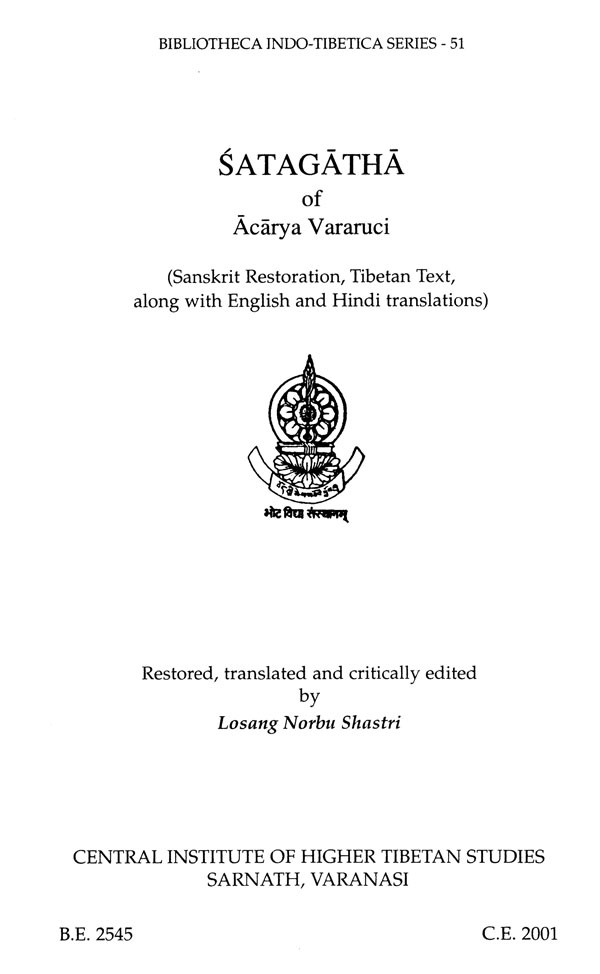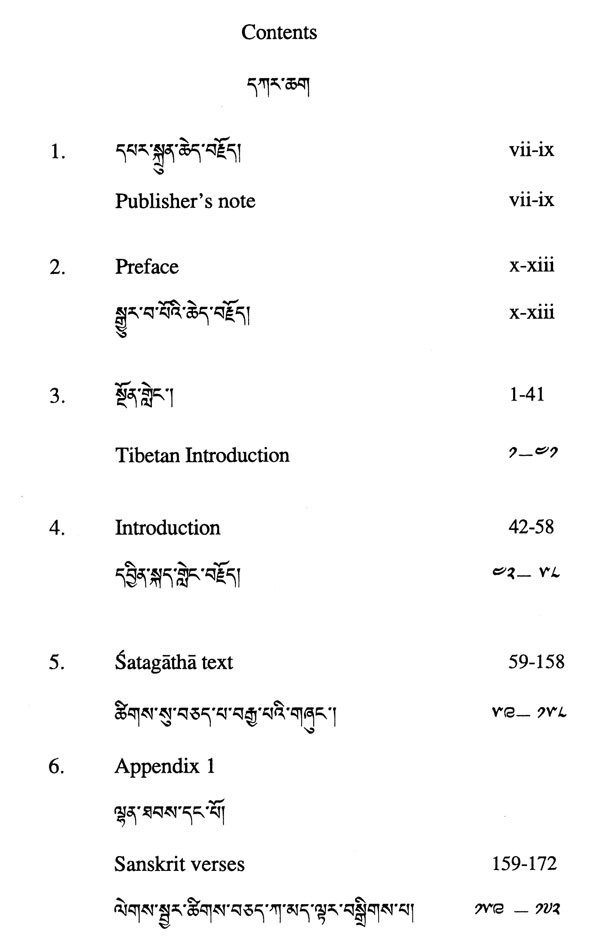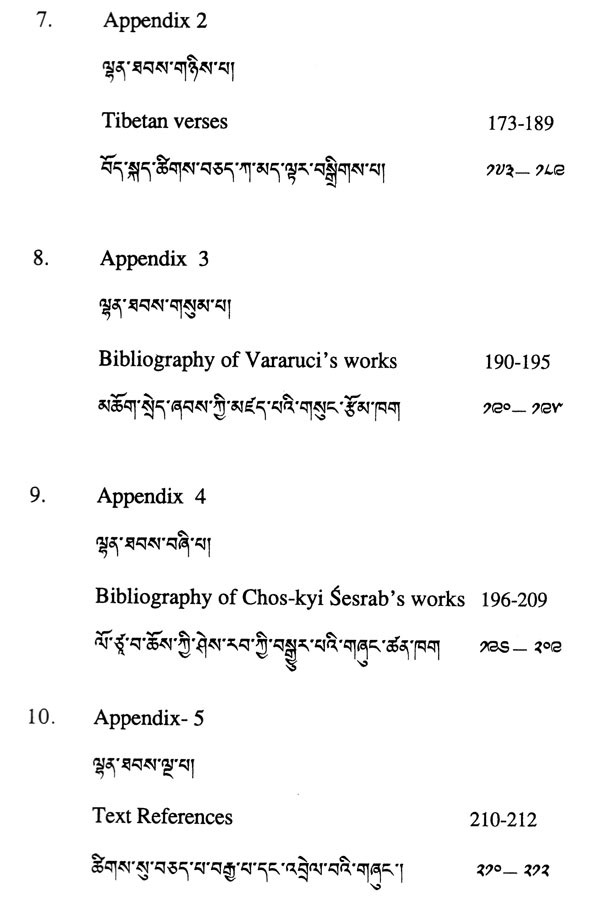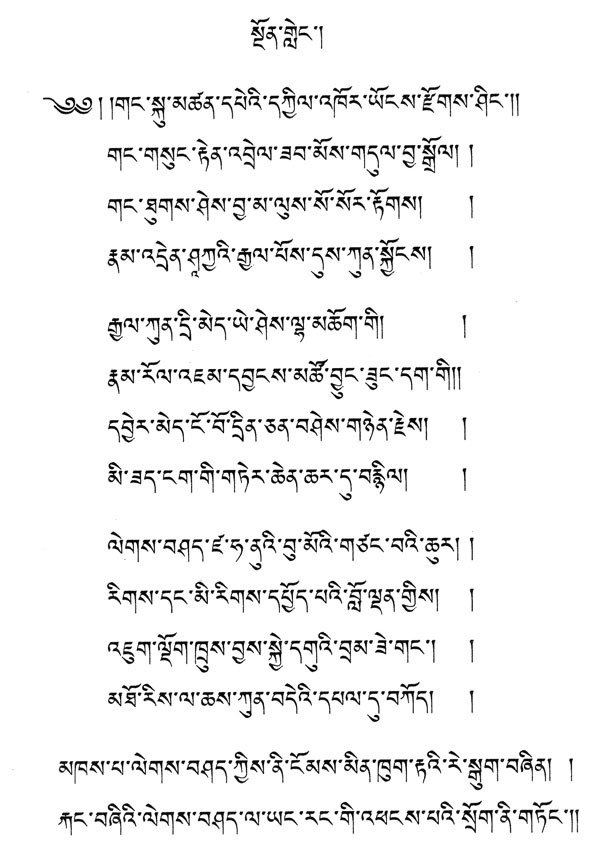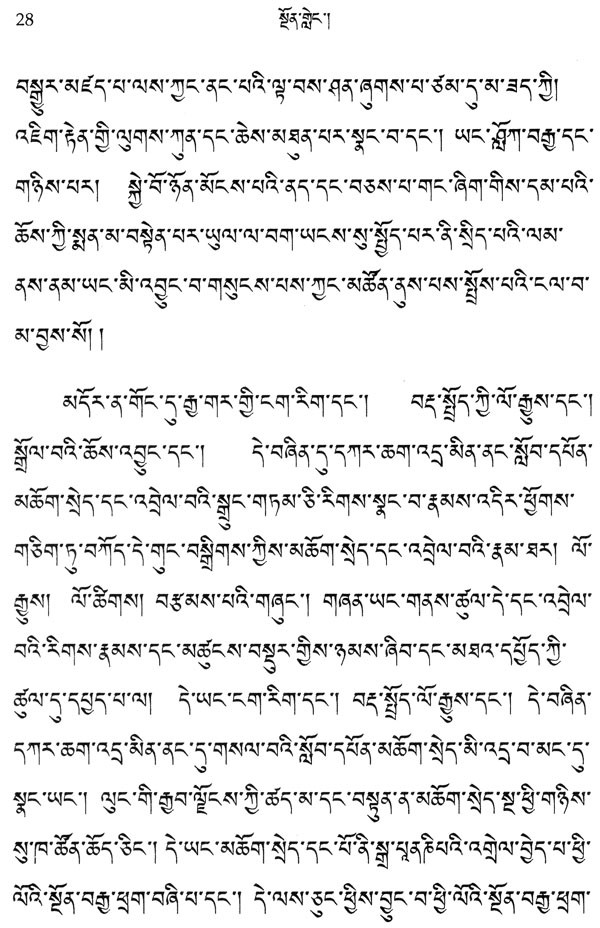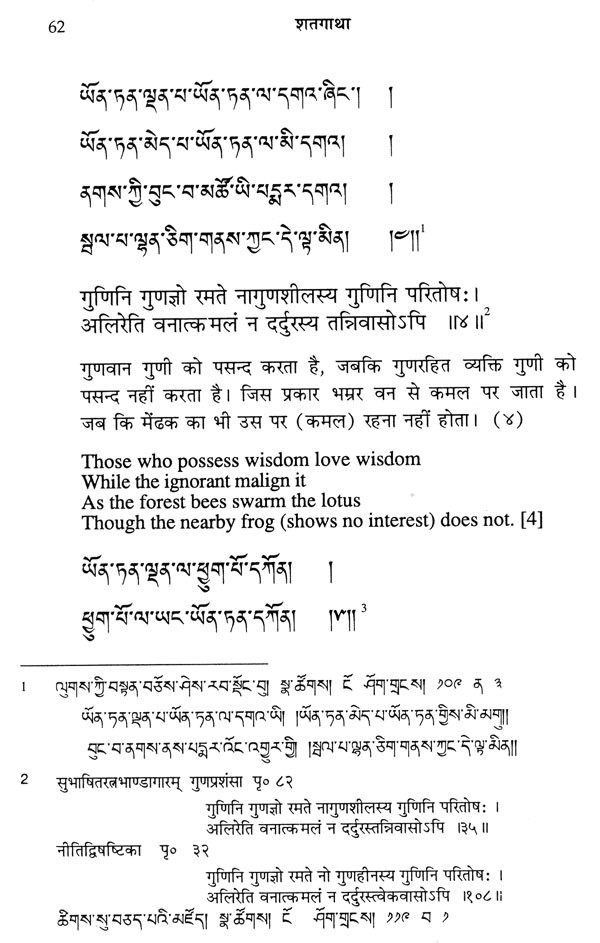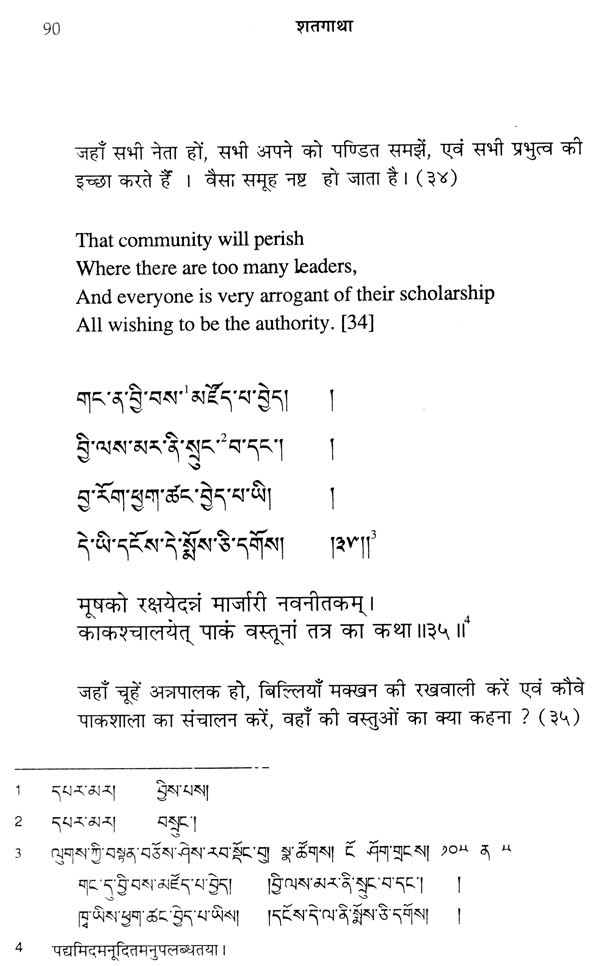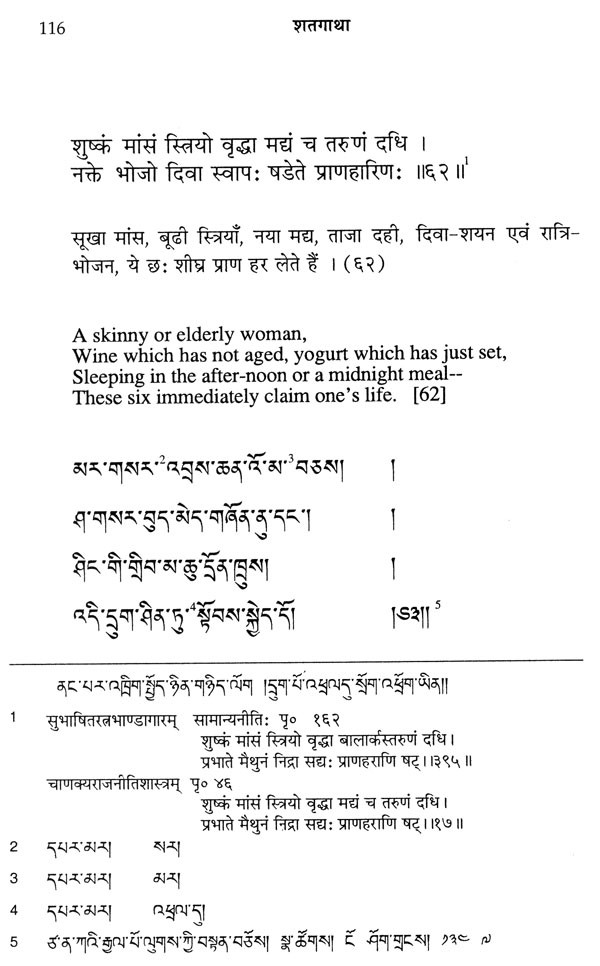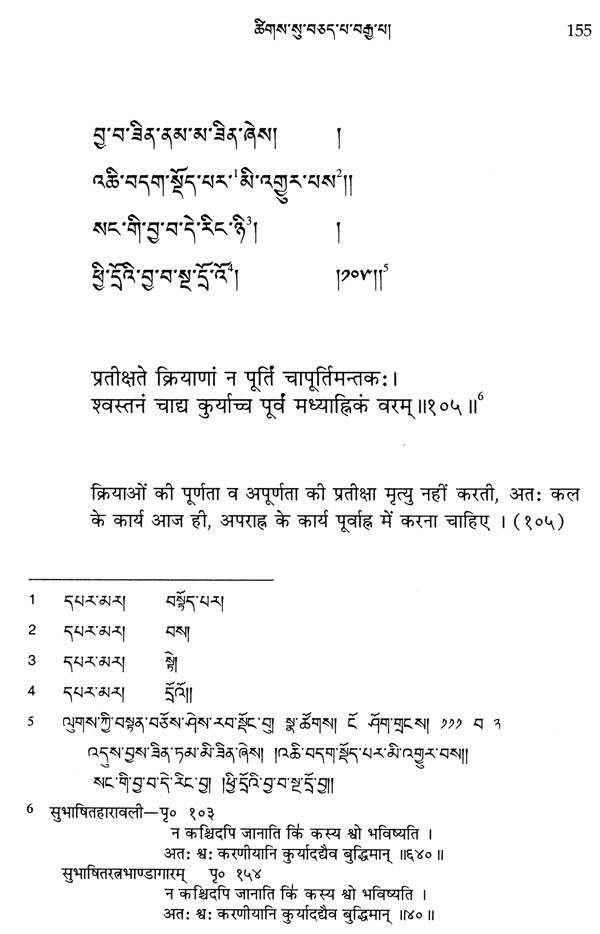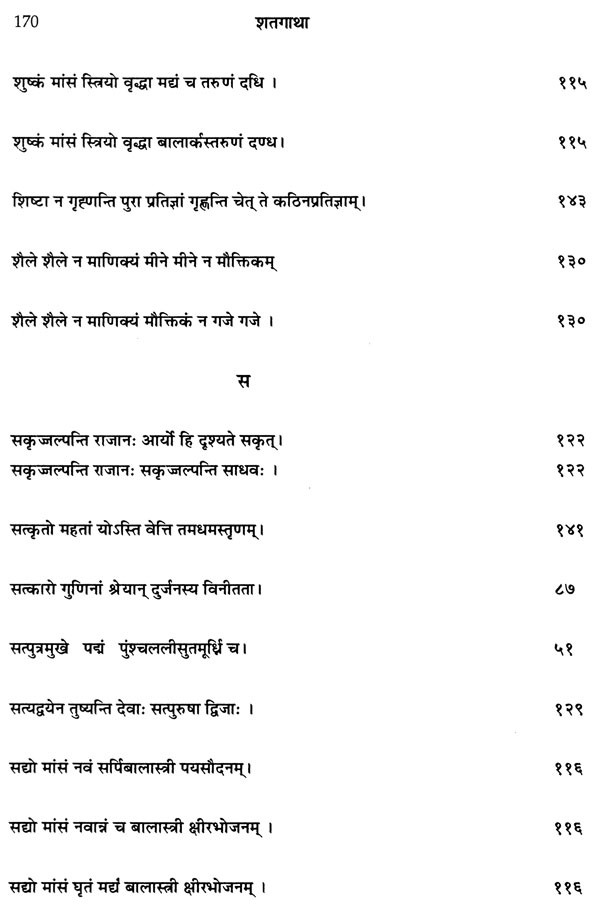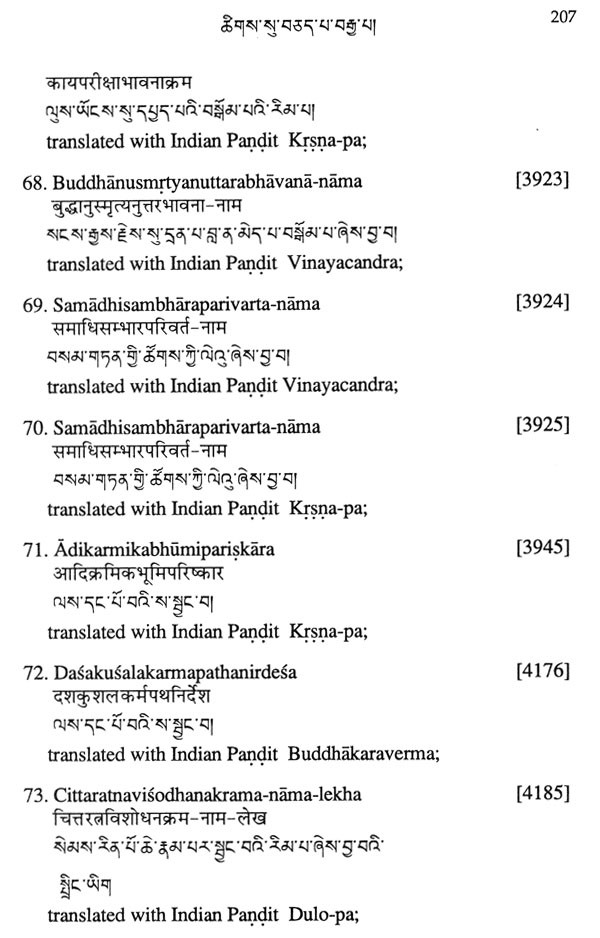
शतगाथा: Satagatha of Acarya Vararuci (An Old and Rare Book)
Book Specification
| Item Code: | UAW772 |
| Author: | Losang Norbu Shastri |
| Publisher: | Central Institute Of Higher Tibetan Studies Sarnath, Varanasi |
| Language: | English Tibetan Sanskrit and Hindi Translation |
| Edition: | 2001 |
| Pages: | 226 |
| Cover: | HARDCOVER |
| Other Details | 9.50 X 6.50 inch |
| Weight | 510 gm |
Book Description
In the Tangyur set of Indian master's work the Rajaniti or Niti is categorised under the heading of Thunmon ba lugs kyi blan boos or Common Treatises on Ethics. In this category there are eight different texts translated in different periods. Most of these texts are translated during the the 'early period of translation', and few in the later 'era of new translation. The Catalogue of Tohoku Imperial University of Japan also includes these texts in a consecutive sequence. Among them three texts authored by Acarya Nagarjuna viz., Prajñāśataka-nama-prakarana was translated into Tibetan by the Indian Pandita Sarvajñādeva and the Tibetan translator (Lotsawa) dPal bTsegs; Nitišätraprajñādanda-nam² was translated into Tibetan by the Indian Pandita Surendrabodhi and the Tibetan translator (Lotsawa) Yeses sDe and Nitisastrajanaposanabindu-nama³ was translated into Tibetan by the Indian Pandita Silendrabodhi and the Tibetan translator (Lotsawa) Yeses sDe. Thereafter, Gäthäkosa-nama¹ by Acarya Ravigupta was translated into Tibetan by the Indian Pandita Jñanasanti and the Tibetan translator (Lotsawa) dPal gyi lhunpo sDe; Satagathas of Acarya Vararuci was translated into Tibetan by the Indian Pandita Vinayacandra and the Tibetan translator (Lotsawa) Choskyi Sesrab; Vimalapraśnottaramälä by Acārya Amoghavarsa was translated into Tibetan by the Indian Pandita Kamalagupta and the Tibetan translator (Lotsawa) Rinchen bSangpo; Canakyarajanitiästra by was translated into Tibetan by the Indian Pandita Prabhakaraśrimitra and the Tibetan translator (Lotsawa) Rinchen bSangpo; Nitisästra by Masuraksa was translated into Tibetan by Dharmasribhadra and Sakya blo-gros.
The works of literature of any nation are not mere plays of imagination or solitary caprices of the brain, but they may be said to be transcripts of contemporary manners or representatives of certain mental types. It is sometimes held that from the works of literature one might form a picture of the modes of human feelings and thoughts through the progressive march of history.
Every kind of human production-literature, music, fine arts, philosophy, science, statecraft and so forth, -has as its direct cause a moral disposition, or a combination of moral dispositions-that somehow seems to determine these products internally. There is a special kind of psychology, a mental perspective required for the development of each of these arts. There is a peculiar inner system of impressions and operations that makes an artist, a musician, a painter, a wanderer, or a person of society. Literature is like living monuments of the outstanding personalities of different times. It deals with visible and almost tangible sentiments and the more a book represents the important sentiments of the people the higher is its place in literature. It is by representing the mode of being of the whole nature of a whole age that a writer can gather around him the sympathies of an entire age and nation. It is the inner movement of sentiments and interests, ideals and emotions made living through artistic expression that can hold before us the life of people.
**Contents and Sample Pages**
